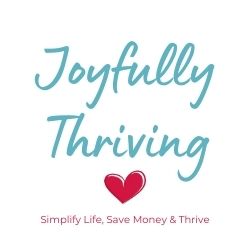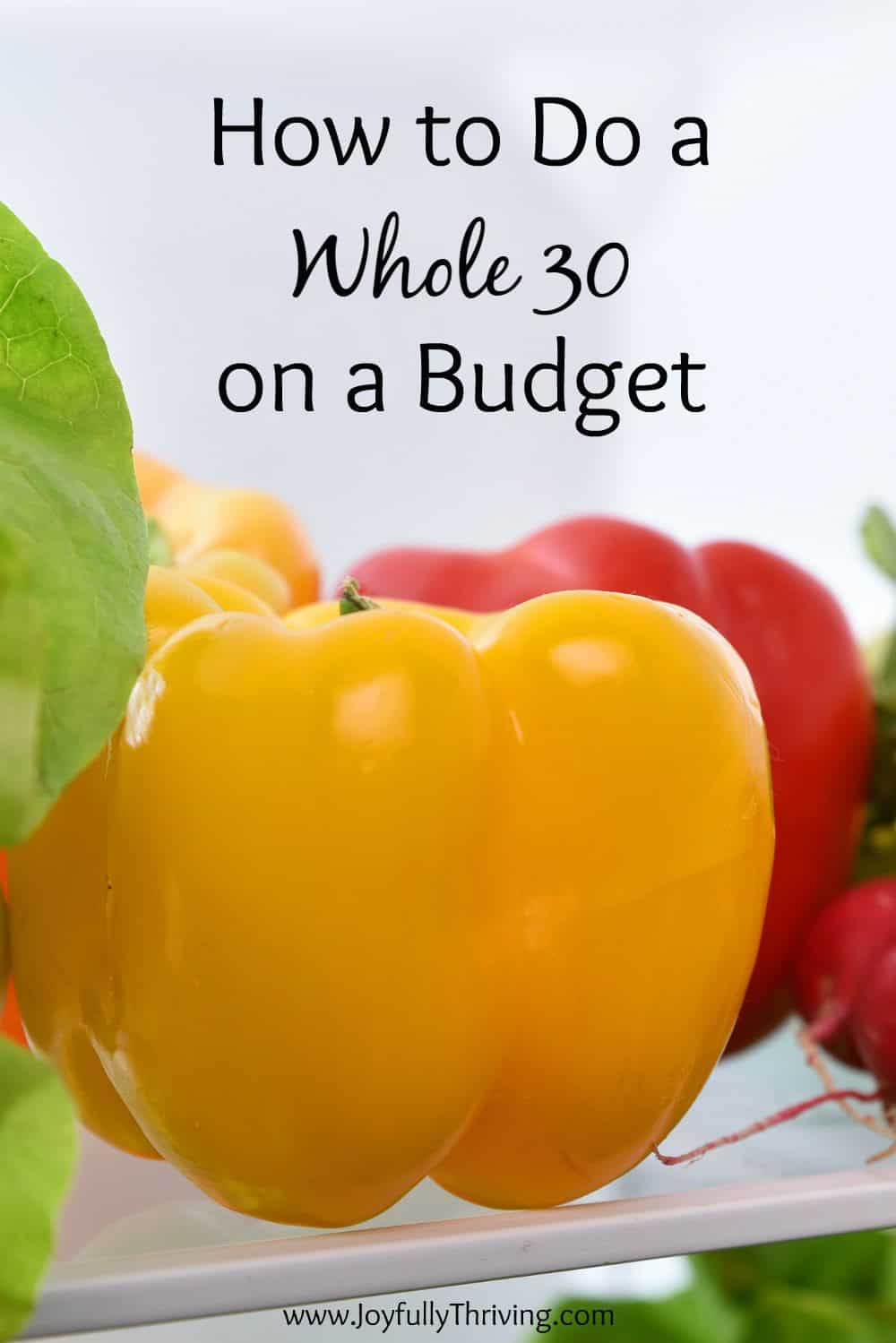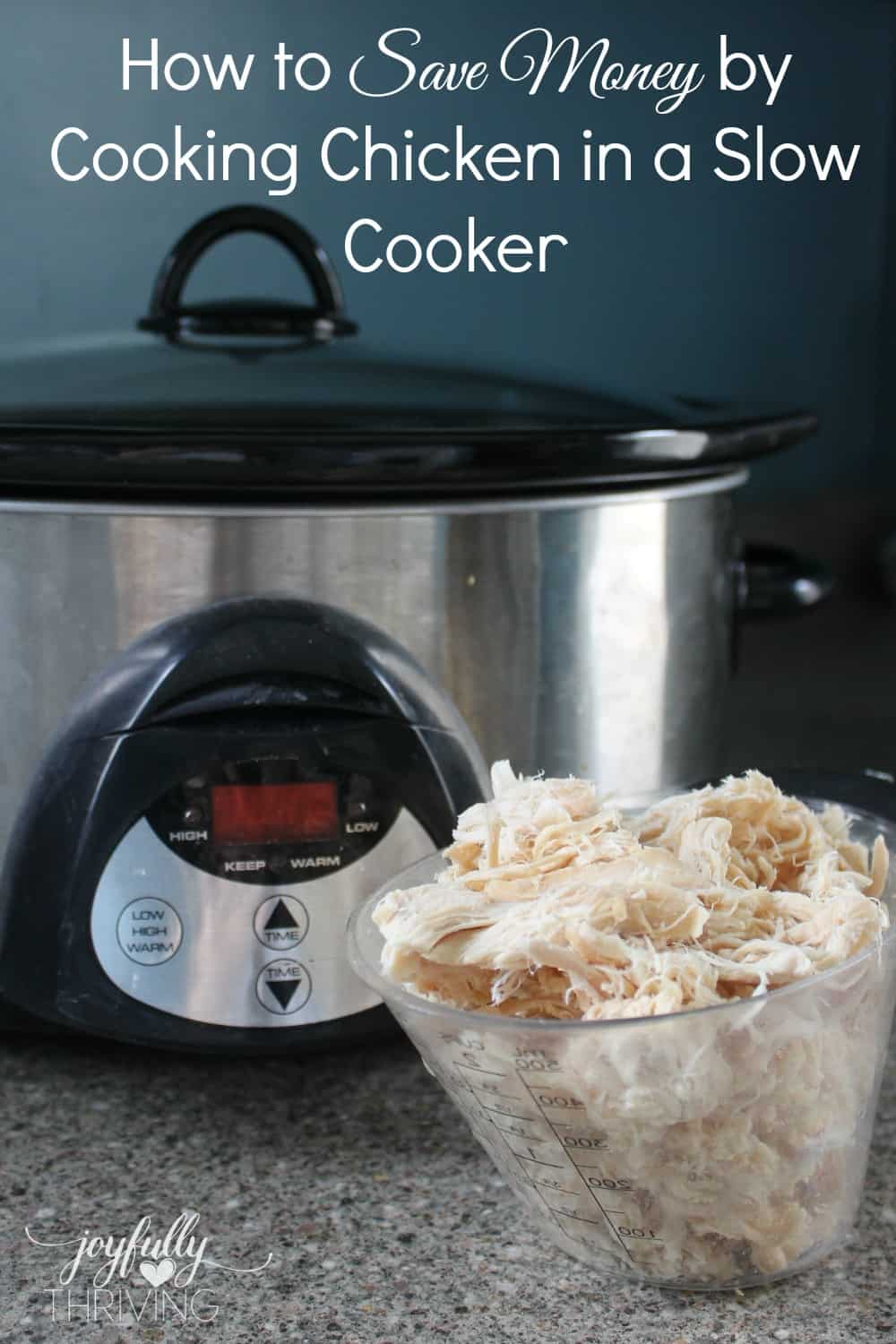How to Do a Whole 30 on a Budget
I recently completed my first ever Whole 30. It was a difficult challenge but a very worthwhile one. You can read more about my Whole 30 experiences and all the lessons I learned here. Before I started, I admit my first thought was one of hesitation. Won’t it be too expensive for us to do a Whole 30? Well, after successfully completing my Whole 30, I am here to show you that it doesn’t have to be expensive to do a Whole 30. I want to share with you how to do a Whole 30 on a budget – just like we did.
This post may contain affiliate links. As an Amazon Associate, I earn from qualifying purchases. You can read more in my disclosure policy.
Is it possible to do Whole 30 on a budget?
Yes. Yes it is. I recently completed my first ever Whole 30 and we did it successfully on a limited budget. How limited? I shop (in Fort Wayne, Indiana) for 2 adults and 3 children (ages 5, 3 and 1). Our grocery budget for the entire month is $400 and that includes food, toiletries, diapers and household supplies. Yes, I realize that may seem shockingly low to many of you but keep in mind that I have been a frugal shopper for many years and I work hard to keep our budget this low.
We started our Whole 30 in the middle of January and ended in the middle of February. In January, I spent $476.97 so went $76 over budget but not bad considering I had stocked up on some household things at the beginning of the month before we decided to do a Whole 30. This also included stocking up on some of the basic Whole 30 supplies that I did not have (coconut aminos, almond flour, olive oil, coconut oil, ghee, almond butter, almonds and cashews). I bought most of those things only once during the Whole 30. In February, I stayed right on track and our total for the month was $393.24.
Even at $400 a month, we had meat at every meal, eggs galore to eat, and our fridge was always full of fresh vegetables and fruit. How exactly do we do it? Here are some of the things I did for our whole 30 on a budget.
Where should you shop for budget Whole 30 foods?
To stretch your budget, you should be willing to shop at several different stores. Yes, it might mean a bit more of your time is spent at the store, but when you are trying to stretch your dollars that is what happens. You will save more money if you are willing to find the best deals. I wouldn’t go to one store just for one product, but I will stock up on several good deals at one store in addition to their weekly sales. Here is what I’ve learned.
Aldi has great deals on produce and almonds (an important part of every Whole 30).
Kroger has good weekly deals on meats and the best price, I discovered, on olive oil (another important ingredient in your Whole 30).
Meijer has good sales on produce and meats as well.
Walmart has pretty low every day prices where you can stock up on other real foods.
Make a plan by looking at the sale ads in your area. Make your list before you leave home so you know exactly what to get at each store.
Hint: Many stores have digital apps for their stores where you can check prices and ingredients. I used the Walmart, Kroger and Meijer app quite successfully to find the best deals – all from the comfort of my couch! This is a great money and time saving trick so you are not wasting your time running to multiple stores.
Simply stated – shop where you can find the best deals.
What are the best ways to save money when doing a Whole 30 on a budget?
It takes time and planning but it is entirely possible to do a Whole 30 on a tight budget. Here are 10 ways I saved a lot of money on our recent Whole 30.
1. Eat what is on sale.
Since a Whole 30 revolves around fresh produce and meat, watch the sales and buy those things. If pork chops and chicken breasts are on sale one week, plan your meals around those meats. Look at the sale ads BEFORE you plan your menus for the week. This is one of the simplest and biggest ways you will save money – whether you are on a Whole 30 or not.
2. Fill your freezer with meat when it is on sale.
If you have wiggle room in your budget, buy extra meat when it is on sale. This is one of the reasons I use a monthly grocery budget. It gives me flexibility so if I stock up one week, I simply buy less the next week. Filling your freezer will help you save money in the long run and gives you more variety in your meals if you can shop your freezer.
In addition, buy the cheaper meats instead of the more expensive ones. 8 ounces of sugar free bacon will cost you $6 (or more). On the flip side, one pound of fresh ground pork to make your own breakfast sausage will cost you $2 (or less). Embrace the savings wherever you find them!
3. Stock up on real, unprocessed foods when they are at their lowest price.
Since you know you will be eating almonds and using lots of olive oil, go where the lowest prices are and stock up. This also saves you from making multiple trips back to a store you don’t usually go to. On the flip side, I don’t recommend on stocking up on too many things, especially if it is your first Whole 30 because you don’t know exactly what you will use. For example, I saw coconut milk talked about all over the place before I started so I bought 3 cans to be prepared – and didn’t even use one full can during my Whole 30. It is better to buy what you need instead of wasting money on groceries you won’t use.
4. Don’t limit yourself to fresh produce.
Consider canned or frozen produce as well as fresh. I found frozen berries for under $2 at Aldi one week which bought me 4 times the amount of fresh raspberries I would have gotten for the same price. Frozen vegetables and fruits are picked at their peak of freshness so as long as they have only one ingredient, consider eating those on your Whole 30. The same goes for canned vegetables – like green beans. Canned green beans sauted with onions and a bit of olive oil or ghee make for a great vegetable side.

5. Forgo the more expensive Whole 30 foods.
Do you really need the $8 bag of almond flour? How about the $7 box of RXBars? They may be nice to have but do you really need them? Can you make a compliant substitution? If so, give it a try – especially if you only need the ingredient for one recipe. Also, check prices at the store for easy money savings. Do you need to buy the $6 box of fresh dates or will the $2.50 generic box work just as well?
6. Make your own condiments.
You are giving up a lot of things for a Whole 30 but you don’t need to give up flavor or sauces. I was surprised to learn that making homemade mayo is really easy. I was not a mayo person until I made my own. Homemade mayo tastes very different from store bought. Once you have made homemade mayo, you can easily make your own sauces for far less than the store bought Whole 30 version. I made an excellent ranch and a very good ketchup (without dates) that were easily to make and added great flavor to our meals. Bonus savings points if you save your chicken bones and vegetable scraps to make homemade broth!
7. Use all your fresh produce.
Do your best not to let fresh produce go to waste. I found it helpful to wash and chop my broccoli and cauliflower at the beginning of the week and store them in big gallon ziploc bags. Whenever I needed to roast some veggies, this saved me time since my prep was already done. It also helped me see what needed to be eaten first so nothing went bad.
8. Eat your leftovers.
It may not have been your favorite meal but when you bought the ingredients and made the food – eat it! Wasting food is like throwing money down the trash. Plus, what you cook for dinner one night makes for a quick and easy lunch the next day.
9. Don’t buy things that are not Whole 30 approved.
This will save you money and keep you from being tempted! I know because there were a couple good deals I almost put in my grocery cart during my Whole 30. Ultimately, I passed them by so I could spend my budget on things I could eat. If you have family members (or children) who are not doing a Whole 30 with you (like our family did), you will have to buy some non-Whole 30 foods. Just adjust your budget and don’t allow yourself to be tempted by those ingredients.
10. Don’t worry about buying organic.
The Whole 30 program recommends buying everything organic. If that is something you want to do, go for it. However (and this is just me and my opinion, mind you), I don’t buy into all the organic hype. I would much rather eat a variety of conventional produce rather than 2 types of organic produce for the same price. When you are watching your price point, if something has to go, make it the organic label.
Any other budget shopping tips?
Saving money on groceries is one of my favorite hobbies. Yes, I’m really a geek in that way! Here are a couple more resources that will help you save money on groceries, whether you are doing a whole 30 or not.
- 10 Easy Ways to Cut Your Grocery Bill Without Using Coupons
- The Best Things to Buy at Aldi
- 7 Simple Ways to Save Money at Meijer
- 9 Ways to Save Dramatically at Kroger
- 2 Easy Coupon Apps for Busy Moms
By using some of these tips and with a little bit of planning, I promise that you, too, can do a whole 30 on a budget. Do you have grocery saving tips to add to this list, for fellow Whole 30 shoppers?








